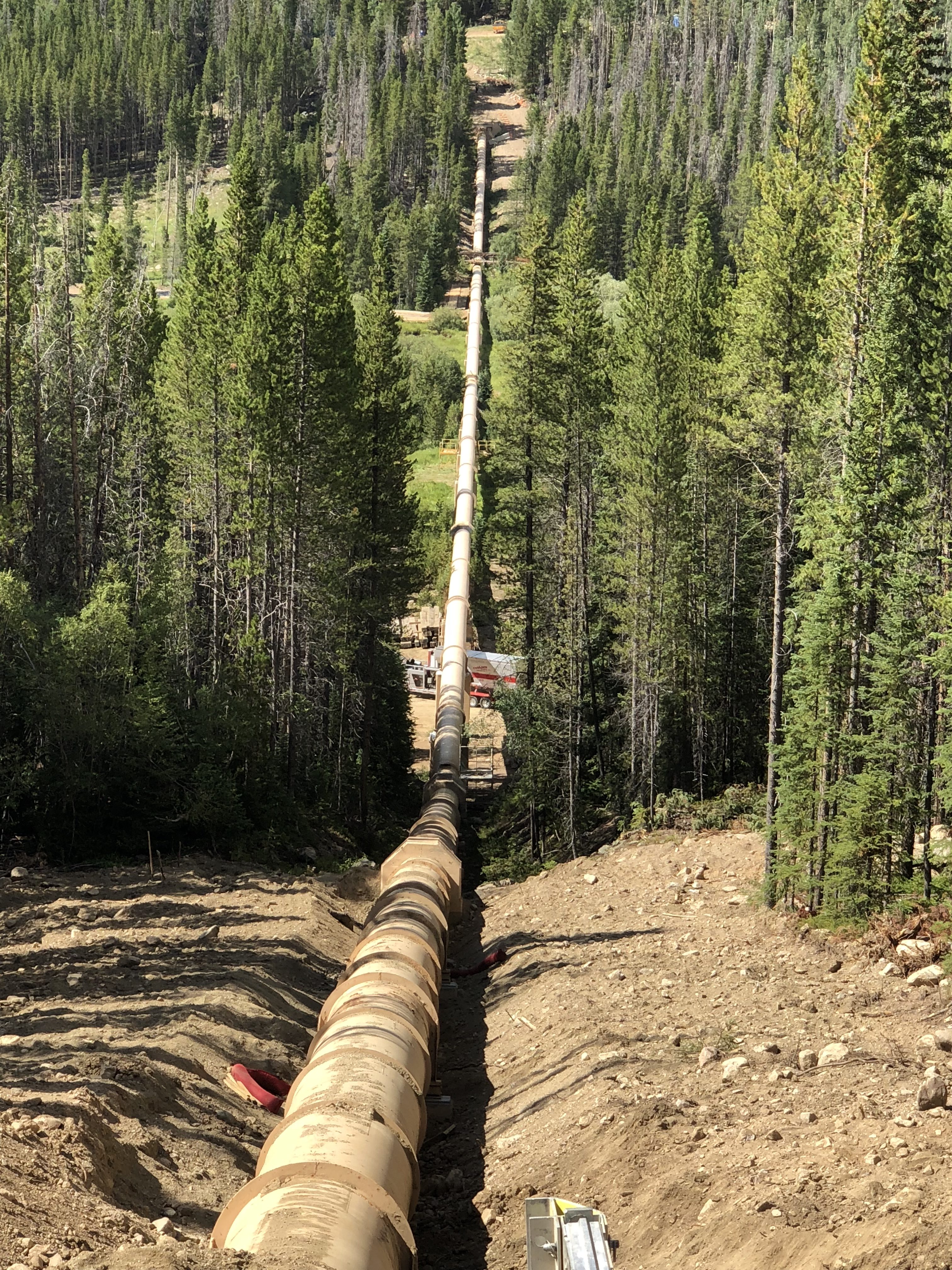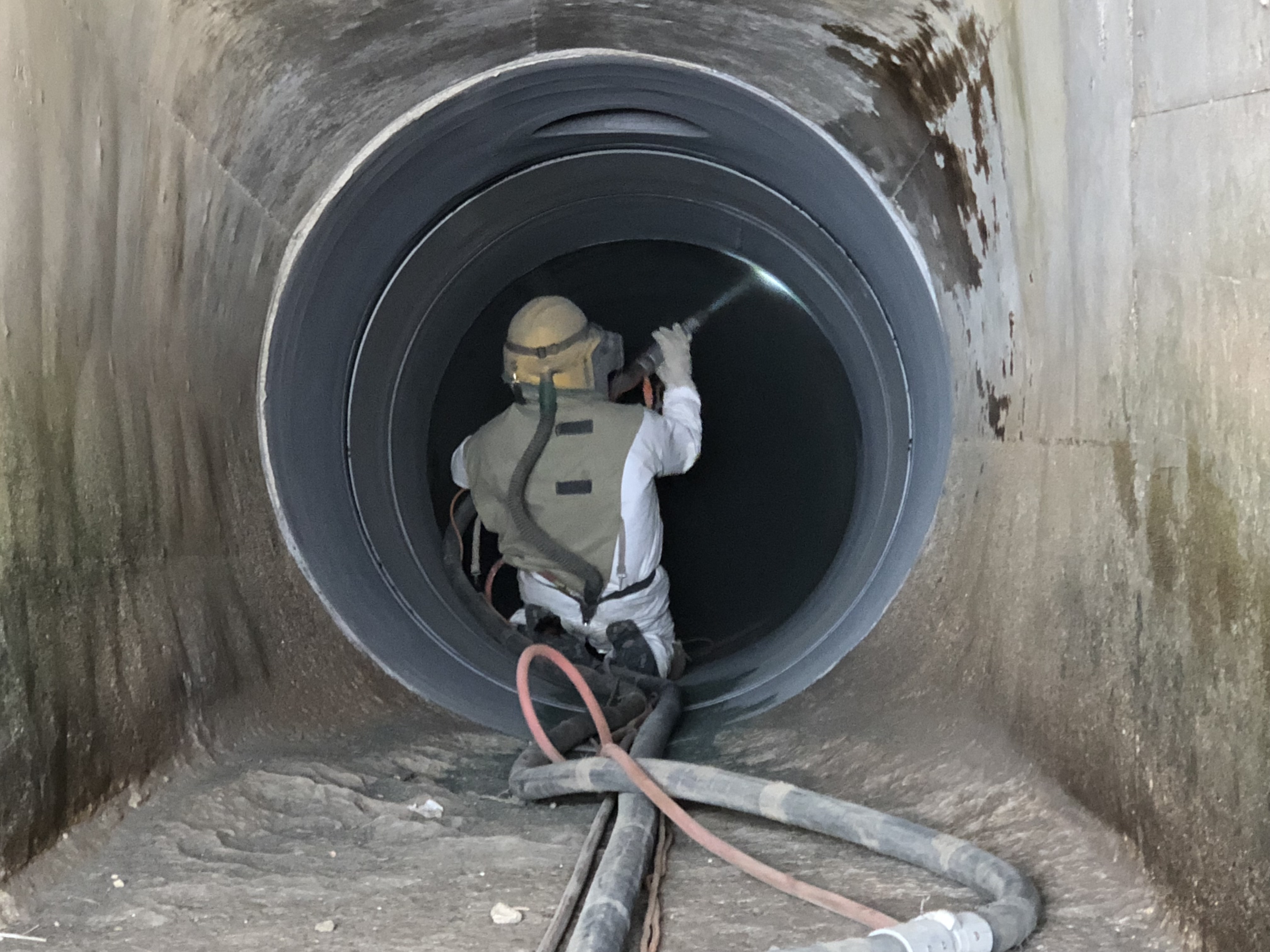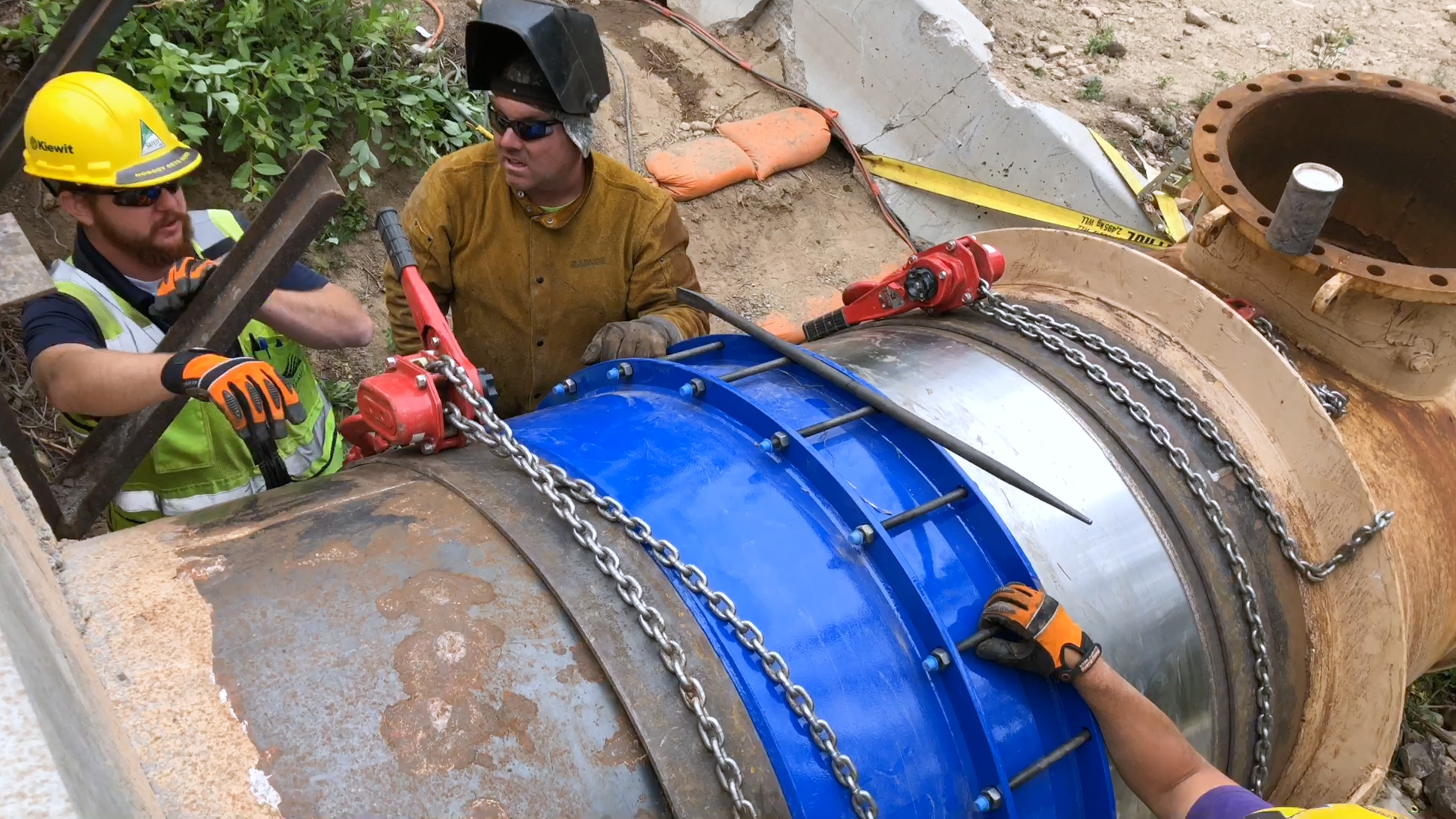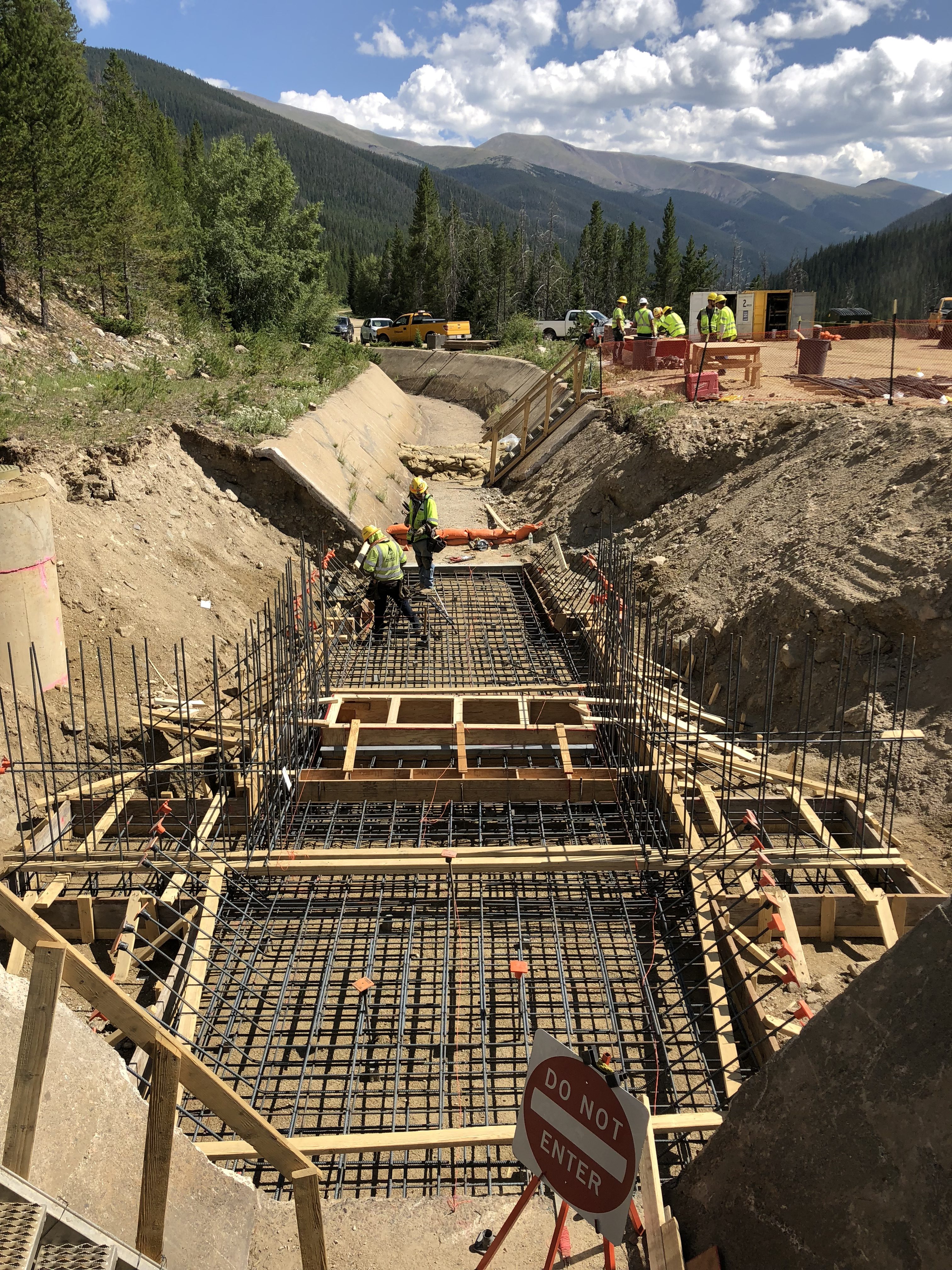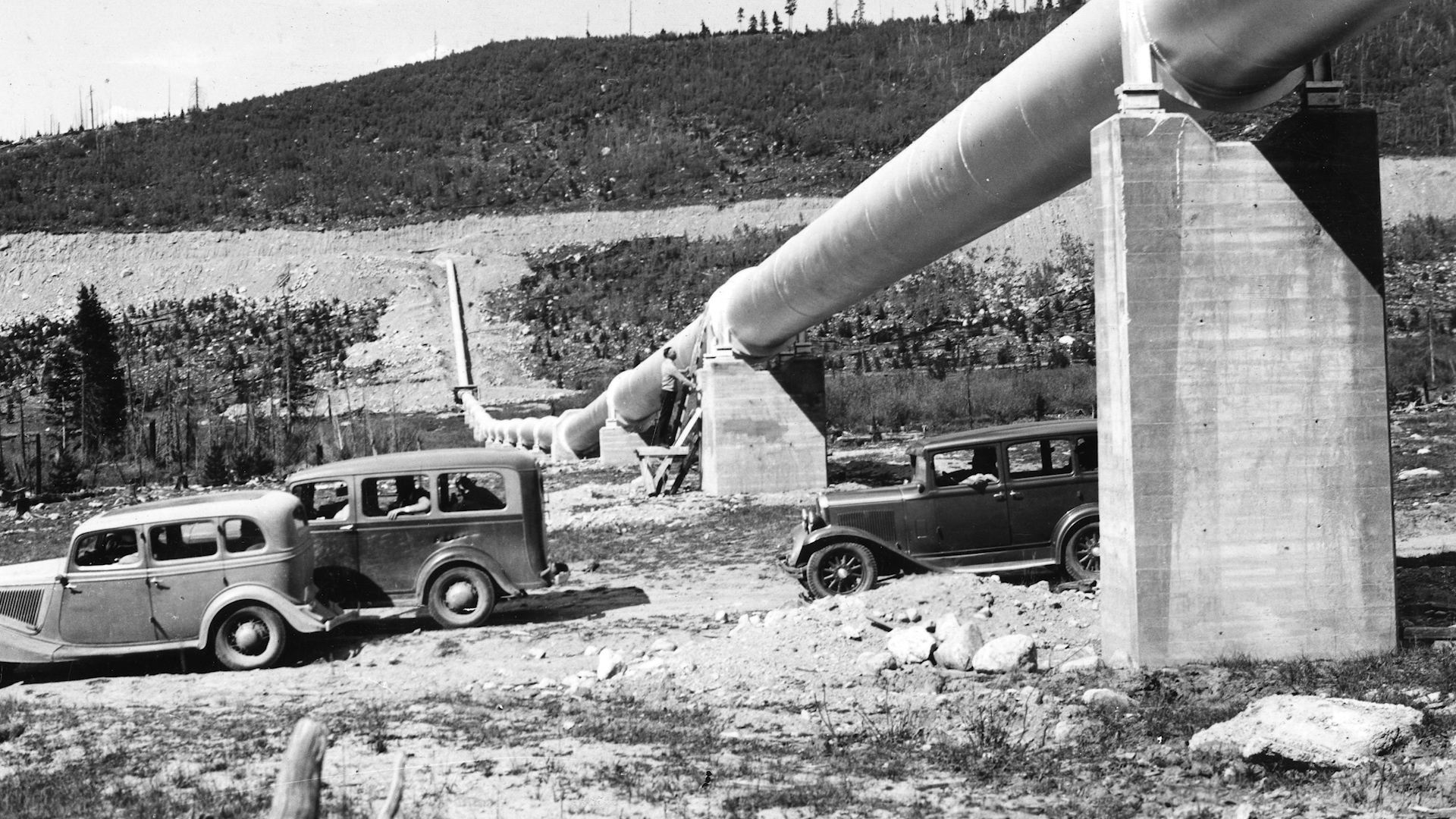
Precision pipe project spans a mountain valley in Grand County
https://youtu.be/_UMx6FooLPg
What’s six football fields long, spans a mountain valley and can make water flow uphill?
The answer is Denver Water’s Jim Creek siphon, a large pipeline that serves as a link to carry water across a valley near Winter Park. The siphon was built in the 1930s and is undergoing a $3.2 million renovation to ensure a reliable water supply to 1.4 million Denver Water customers.
“The siphon is an 1,800-foot-long steel pipe that’s 52 inches in diameter,” said Laura Dennis, an engineer at Denver Water who led the design work on the project. “It’s held up remarkably well for over 80 years, but it’s due for a facelift.”
The siphon was built in the 1930s as part of Denver Water’s complex network of pipes, canals and tunnels that transport water from the West Slope, through the Moffat Tunnel to the Front Range.
“Siphons are important parts of our collection system because they make it possible to move water across mountainous terrain,” Dennis said. “Siphons are also very efficient methods of moving water because they don’t require electrical pumps.”
The siphon that crosses the Jim Creek valley functions under the same laws of physics at home when siphoning water out of a fish tank or transferring gasoline between tanks.
In this case, water inside the siphon drops 149 feet down a hill and then rises 97 feet up the other side of the valley to connect two sides of a canal.
When the pipe is full of water, the siphon effect kicks in due to the 52-foot drop in elevation between the start of the pipe and the end of the pipe.
The height difference creates a gravitational push-pull effect that allows water to flow uphill.
First major upgrade since the 1930s
The multimillion-dollar renovation project began in June. It includes four components: applying a new protective coating inside the pipe; replacing six expansion joints; repairing concrete piers and supports; and building a new gate structure near the entrance to the pipe.
The most important part of the project involved recoating the inside of the siphon to protect it from corrosion.
When the siphon was built, engineers lined it with a protective coating made of coal tar. After 80 years of operation, the coating wore thin and needed to be replaced.
Construction project manager Joe Houtz of Western Summit Constructors, a Colorado company based in Englewood, said the need to replace the lining is comparable to road maintenance.
“Think of crews putting a new layer of asphalt on a road to smooth it out after it has worn down over the years,” Houtz said. “It’s the same with this pipe, we’re giving it a new lining to make sure it holds up.”
Workers from Coblaco Services, based in Aurora, did the critical job of removing the old lining and applying the new one along the entire 1,800-foot-long pipe.
“It’s tough work given the steep slope, length of the pipe and the tight work space,” said Ryan Haas, construction project manager at Denver Water. “Crews had to go inside the pipe with sand and water blasters to scrape off the old lining.”
After the Coblaco workers removed the old coating and prepped the surface of the pipe, they sprayed a new epoxy coating on the interior of the pipe. The material protects the pipe from corrosion and is certified for use on pipes that supply drinking water.
Expansion joints
The second major part of the project involved replacing six expansion joints. These six-foot sections of pipe absorb the fluctuations of the pipe as it expands and contracts in response to temperature changes in air and water.
The joints absorb the movement in the steel that would otherwise put stress on the pipe and lead to significant damage.
“The joints are showing signs of corrosion,” Dennis said. “It’s important to replace them before they crack and no longer function correctly.”
Replacing the expansion joints required cutting the old sections out with a welding torch. “It takes precise measurements to make sure the new joints fit,” Houtz said.
To reduce the risk of fire during the hot summer days, crews hosed down trees and bushes along the pipeline’s path during the welding work. Fire extinguishers also were on hand and a fire-resistant blanket was placed on the ground as additional safety precautions.
Support columns and new gate
Another component of the project involved repairing 21 concrete support structures that hold the pipeline above the ground.
“Some of the footings were starting to crack and deteriorate, so we wanted to make sure they’re in good shape,” Dennis said.
Crews also built a new gate structure on the canal to feed water into the siphon. The new gate will make it easier to drain the siphon during winter months so it doesn’t freeze and crack.
Work on the Jim Creek siphon is expected to be completed in October, but the renovated pipeline won’t be put back in service until spring 2019 when the mountain snowmelt is in full swing.
“This pipe has held up remarkably well over the years,” Dennis said. “The workers in the 1930s did a good job building this siphon, and this project will extend its life for many years to come.”


